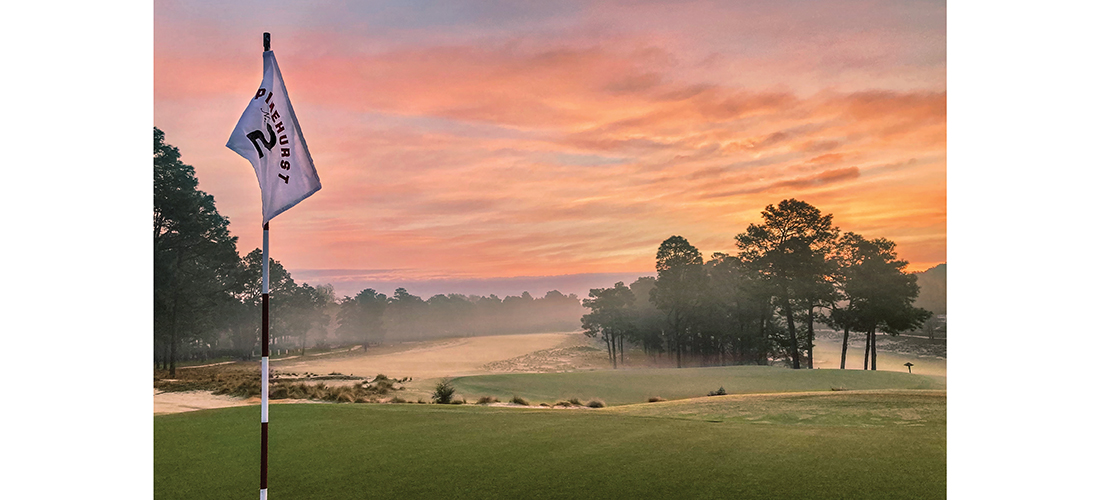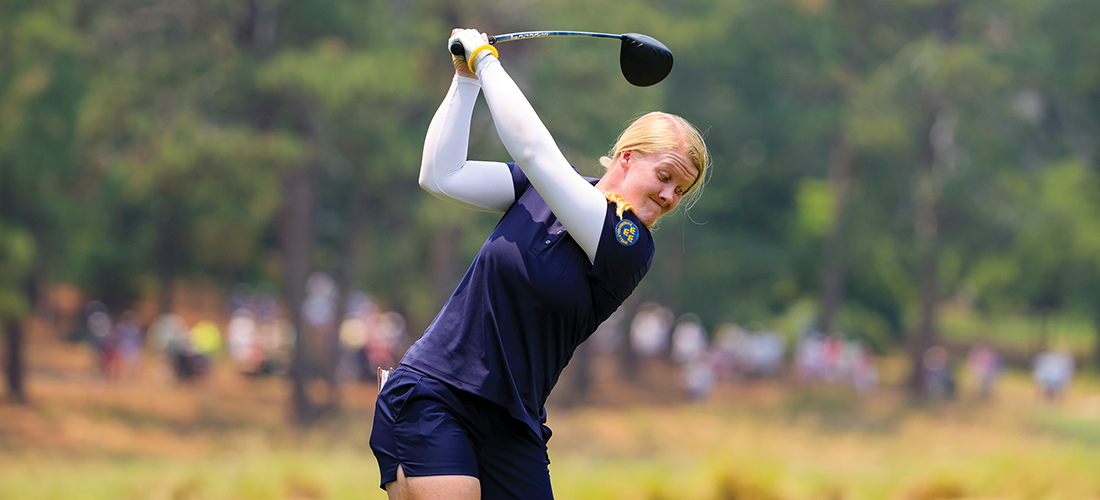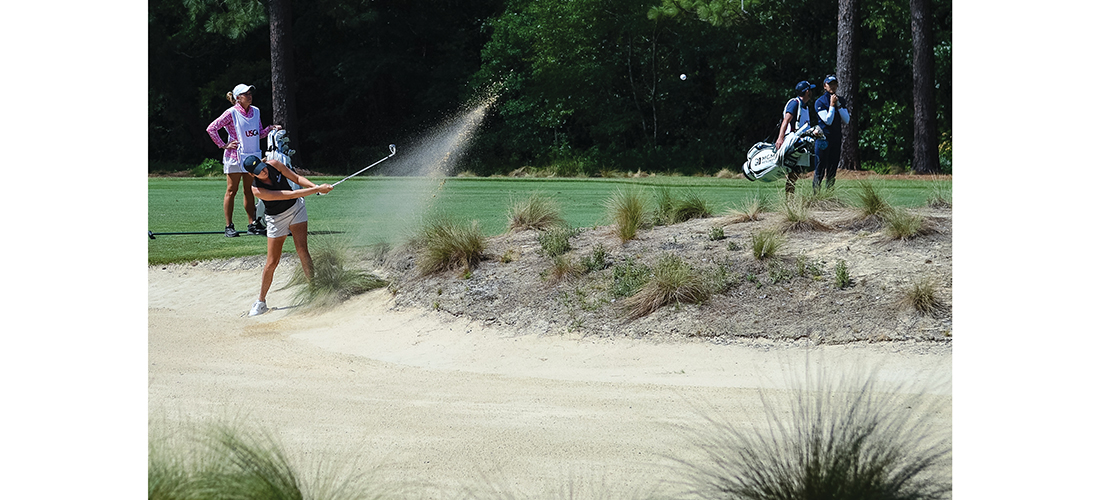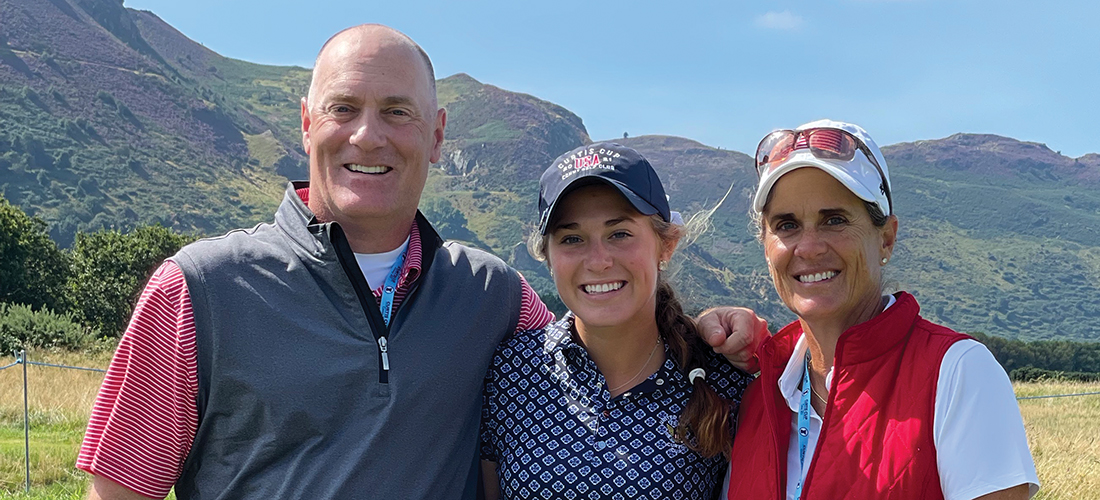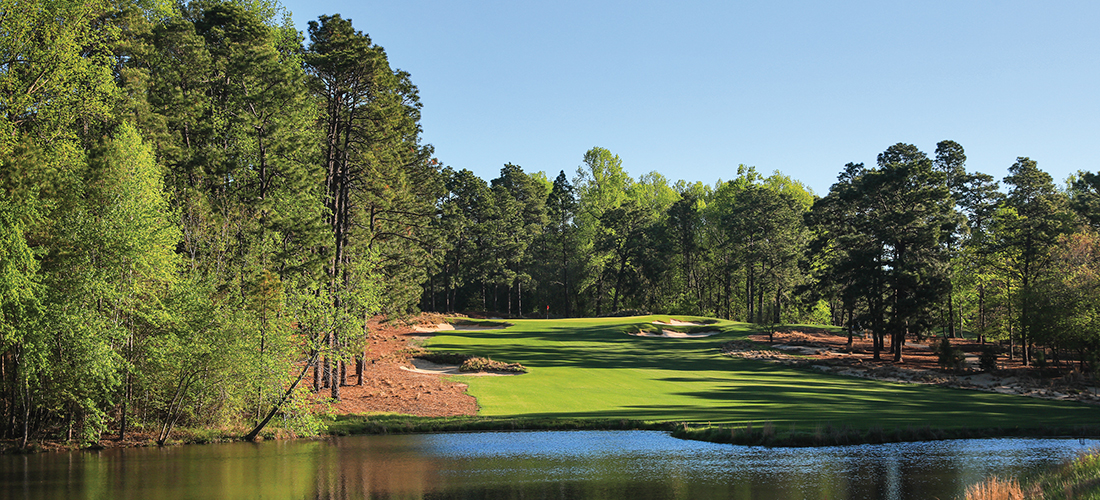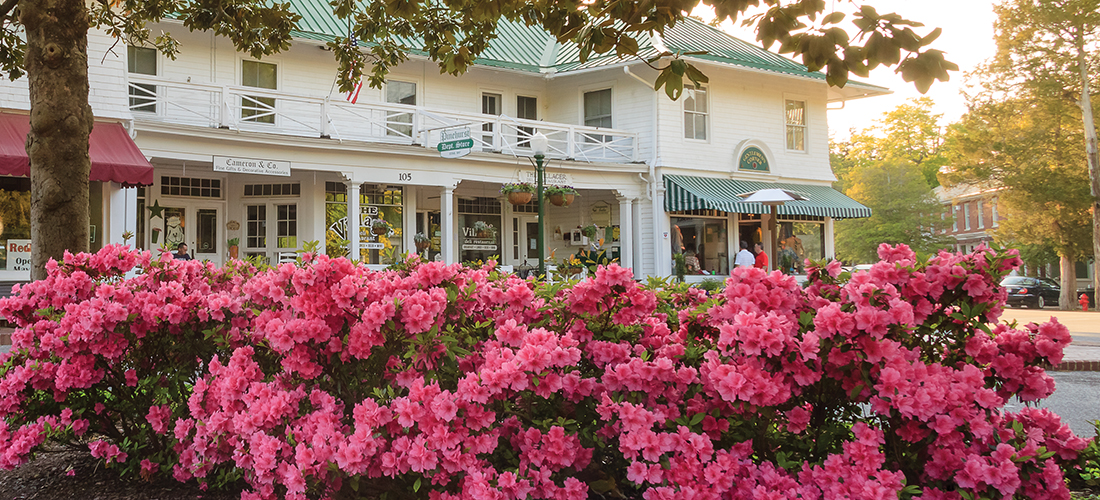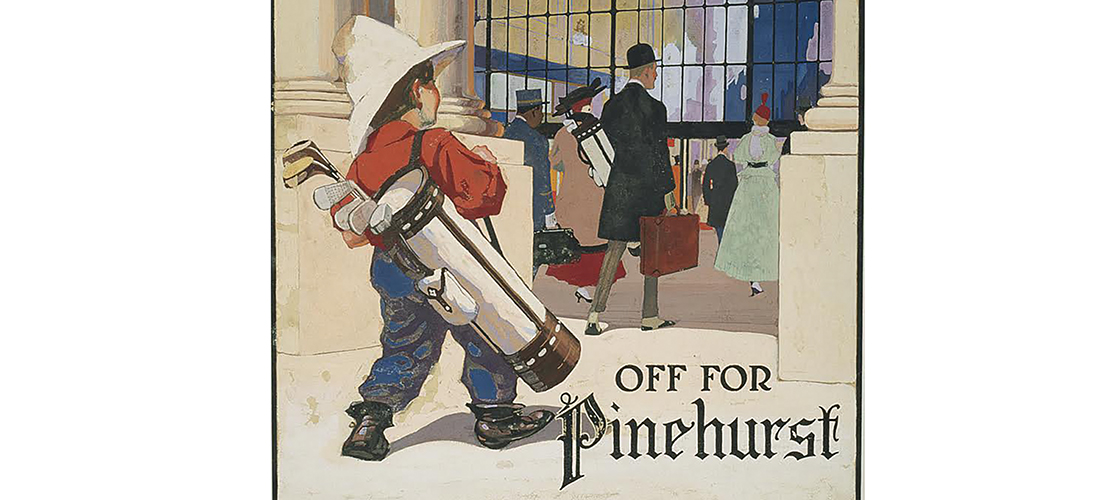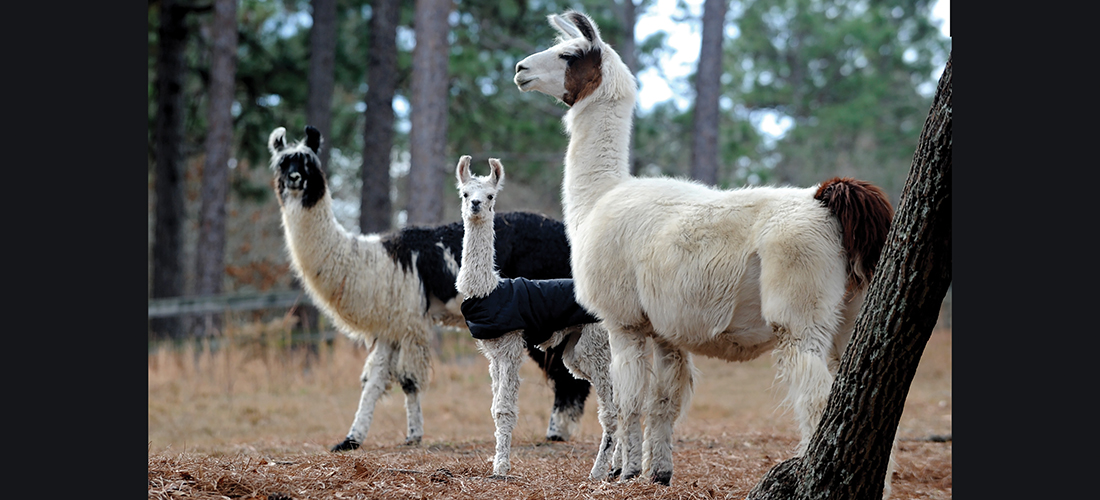It’s a Beautiful Day
Hot or cold, rain or shine
By Lee Pace
At the opposite end of the phone line, there is flesh and blood. There is a real person — not a computer navigated by a series of keyboard punches.
It’s a beautiful day in Pinehurst.
Ring the main number at The Carolina Hotel and Pinehurst Resort since the mid-1980s and you have found someone like Dib Taylor, Gloria Spencer, Art Roper or one of their fellow phone operators. Dial out to Bandon Dunes or Pebble Beach and you get a recording inviting you to hack your way through the maze.
A Pinehurst member might be calling from McKenzie Road and know for a fact it’s raining cats and dogs, but since the 1980s they would get the “beautiful day” greeting followed by the phone operator’s first name.
“I love to say it,” Dib Taylor once said. “Does it show? I have fun with it. People will tease me. Rain or shine, to me it’s always beautiful in Pinehurst. But if people ask, I’ll tell them the truth.”
“People say I make their day, pump them up a little bit,” added Spencer, who worked the resort phone lines from 1985 through her retirement about a decade ago. “It makes me feel good to say it. Rain or snow, it doesn’t matter, people call and say, ‘I called just to hear you say that.’ It’s a personal touch that’s important.”
Pat Corso was a hotel executive with Club Corporation of America when he was dispatched to Pinehurst in 1987 to run the resort and club. Phone operators at a resort on the Florida Panhandle that was in Corso’s regional domain answered with, “It’s a beautiful day at Sandestin,” and Corso thought that would work well at Pinehurst, too. Ever since, the Pinehurst staff has worked the phones 24/7 and presented a subliminal message to callers that Pinehurst is a better place than any they might be calling from.
“Pinehurst to me means serenity, it’s peace, it’s the people,” Spencer said. “When I first came to work here, I thought I was going on a picnic, it’s such a place of beauty. Pinehurst is such a peaceful, calming place.”
Another signature greeting of Pinehurst is the 300 yards of Carolina Vista, the lane that runs from Highway 2 north to The Carolina Hotel. The stately white building sits grandly in the distance with its copper roof and signature cupola, framed by a canopy of hollies and pines and hundreds of flowers nestled along the street. Travelers often have driven from distant parts or ridden for 90 minutes from the airport in Raleigh and are taken aback as they pass from the here-and-now into antique nirvana.
Jack Kennally worked on the transportation staff at Pinehurst for more than a decade and sometimes heard first-time visitors grouse about the long drive from Raleigh-Durham International.
“They ask, ‘Why’d they build it so far from the airport?’” said Kennally, who then told them Pinehurst was built before the airport. That gives them some perspective and puts them in the proper frame of mind when his shuttle turned off the round-about and wound its way up the Vista.
“They love the architecture of the houses along the lane,” Kennally said. “They say, ‘Oh, it’s lovely.’ They imagine what it looked like back in the ’30s, that kind of thing. The big dome, the copper cupola, are very striking. The drive up the Vista sets a nice tone for the visit.”
During his tenure as Carolina Hotel general manager from 2004-2020, Scott Brewton would drive out of his way each day going to work — eschewing a more direct route into the employee parking lot in back of the hotel in favor of entering via Highway 2 and Carolina Vista and passing by the old world grandeur of Ailsa House, Beacon House, Heartpine House and Little House.
“You swing off the traffic circle and there’s a gentle rise, and it’s like the hotel comes out of the ground,” Brewton said. “There are flowers on your left and right, people walking dogs or carrying tennis rackets. It’s a nice visual to start every day.”
May Wood, a golfer at Vanderbilt University in 2002 and the winner that year of the Women’s North and South Amateur, remembered her first drive along Carolina Vista.
“It was electrifying,” she said. “I almost teared up the first time I saw it. It was the most beautiful place I’d ever been.”
The “beautiful day” theme carries over from the hotel into the village of Pinehurst and, of course, onto the five golf courses emanating from the main clubhouse. Kaye Pierson has worked part time on the Pinehurst golf course maintenance crew since 2008 and, as the quality of cellphone cameras improved, began looking for good images as she mowed grass on the golf courses at dawn each morning. One morning in January 2013, she came to work and told the guys in the maintenance shop, “Watch the sky show this morning.”
She snapped a photo of the Putter Boy statue, the practice putting green, the Padgett Learning Center building and the red, gold and blue palette of the sky in the distance, all of it accented with the early morning mist hanging low to the ground. Nine years later, she captured a shot on the third green of No. 2 looking east along the fifth hole, the sky in a similar dazzling arrangement. Both images were dispensed worldwide via Pinehurst Resort’s social media channels and now are available on prints in gift shops around the resort.
“It’s just magical at that hour,” she says. “For anyone who works on a golf course early in the morning, that’s it. That’s why we’re out there. We are fortunate to be on the course that time of day to see the quiet and the mist and how it changes. Everything just kind of stops for a few seconds and you realize how lucky you are.”
In the village there are no right angles in the roads and no large signs on the shops and you half expect to see Beaver Cleaver or Barney Fife walking down the sidewalk. James Tufts’ New England roots dominate the architecture — the arched doorways, the Colonial Revival façades, the sharply pitched roofs and the gables, the cedar and redwood trim, the white picket fences, the cabins built of juniper logs, the original heart pine columns of the Casino building (now a real-estate agent’s office). Pinehurst has no drive-up windows, but one bank has a “Walk-Up Garden.” And then there are the colors, the two best being the forest green throughout the village and the sepia on the old photographs preserving the history — from the halls of the Carolina Hotel to the file books in the Tufts Archives.
“Each day you spend in Pinehurst, you escape the real world,” said clothier Chris Dalrymple, who owns Gentleman’s Corner. “You mark it off as a day you succeeded.”
Scott Straight has visited Pinehurst frequently from his home in French Lick, Indiana, sometimes as a guest of the gathering hosted each fall by Fluor Corporation and others on a spring golf outing with friends and family. When he first came in the early 2000s, cellular service was spotty in the Sandhills.
“It’s like going back in time, back to a much simpler time,” Straight said. “I couldn’t believe it when I first visited. Here I was in this little village, this golf resort, with no cell service, no email, totally removed from the world.”
He smiled, noting the evolution of technology.
“Unfortunately, somebody went and put a cell tower nearby,” he said.
Pinehurst isn’t immune from technological innovation, but it’s still old school with a voice reminding you it’s in a beautiful world of its own. PS
Lee Pace’s first book about Pinehurst and its history, Pinehurst Stories—A Celebration of Great Golf and Good Times, was published 30 years ago.

